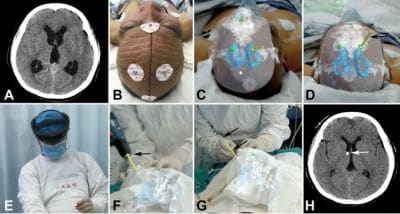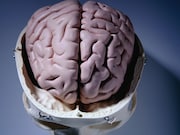Fewer passes, less target deviation with hologram-guided external ventricular drain placement
WEDNESDAY, Oct. 17, 2018 (HealthDay News) — Hologram-guided external ventricular drain (EVD) insertion yields greater accuracy and no adverse events, according to a study published online Oct. 16 in the Journal of Neurosurgery.
Ye Li, M.D., Ph.D., from Capital Medical University in Beijing, and colleagues performed preoperative and postoperative computed tomography (CT) scanning for every patient who needed EVD insertion. In 15 patients, hologram-guided EVD placement was applied prospectively. For each patient, model reconstruction and trajectory calculation were completed using preoperative CT. The neurosurgeon was able to visualize the preoperative CT-generated holograms of the surgical plan by wearing a Microsoft HoloLens and could perform EVD placement by keeping the catheter aligned with the holographic trajectory. Retrospective controls included 15 patients who had undergone classic freehand EVD insertion.
The researchers found no adverse events related to the hologram-guided procedures. Before the surgical part of the procedure began, there was a mean of 40.2 ± 10.74 minutes of additional time. The average number of passes was 1.07 ± 0.258 and 2.33 ± 0.98 in the holographic guidance and control groups, respectively. The mean target deviation was 4.34 ± 1.63 and 11.26 ± 4.83 mm in the holographic guidance and control groups, respectively.
“To the best of our knowledge, this is the first positive experience with the use of a wearable mixed-reality holographic computer to assist neurosurgeons in bedside EVD insertion,” the authors write.

The holographic image is superimposed over the patient’s head and aligned using registration markers. Photo: Copyright 2018 AANS
Copyright © 2018 HealthDay. All rights reserved.








